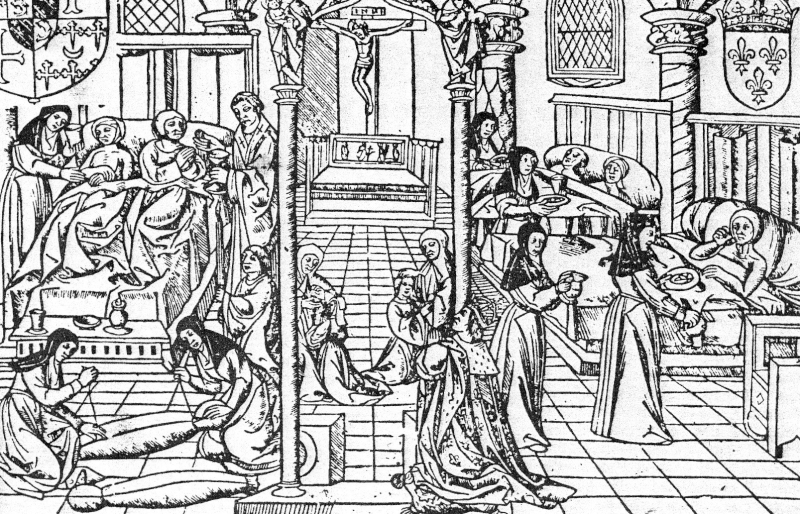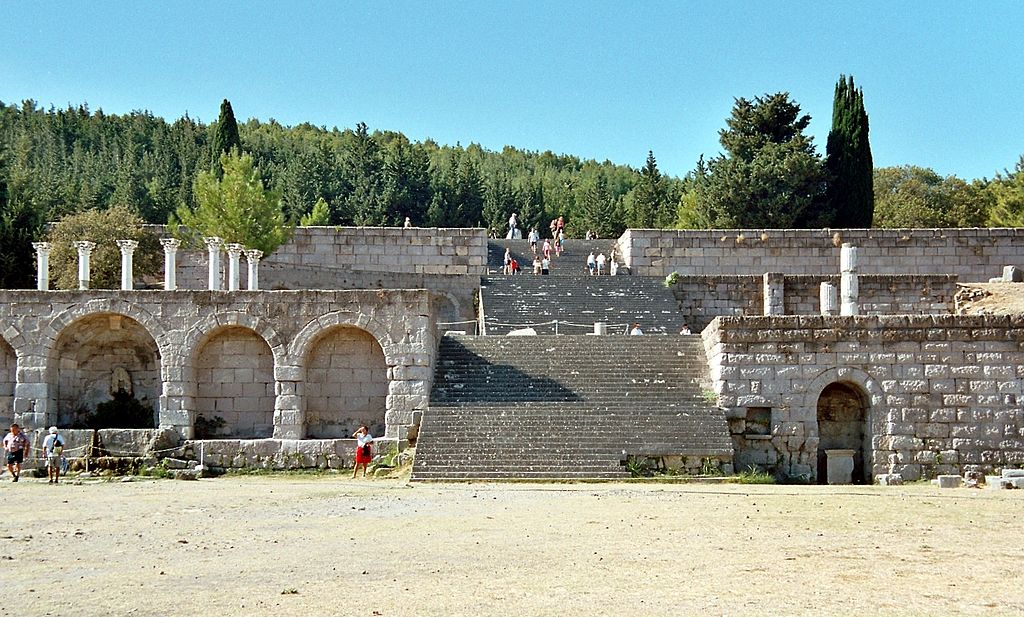Written by Edward Whelan, Contributing Writer, Classical Wisdom
Most of us are lucky enough to be within driving distance of a major hospital. It is often the case that we take our medical services for granted. In the Classical era, things were very different. Though the Greeks and Romans made many innovations, they failed to provide any public healthcare. The establishment of the first hospitals was a result of Christianity.
Hospitals Before the Coming of Christianity
Before the Roman Empire converted to Christianity, healthcare was left to the individual and the family. There had been some charitable hospitals in existence in Rome in the 1st century BC, and even by the 1st century AD there were only private hospitals accessible to the rich.
However, there were many temples and sanctuaries to the Greek God of Healing, Asclepius. All over the Roman world there were shrines to the God, called Askleipions. Here sick people went if they needed to find relief from some illness or condition.
Many regard these as among the first hospitals because priests would often tend to the sick and comfort them in their illness. There were many facilities for the sick and many of the priests of Asclepius were renowned as healers. Yet, only believers were allowed to enter these early medical facilities.
There was also the series of military hospitals set up by various Emperors. These were only designed for wounded and ill soldiers and did not provide treatment for the general population.
Christianity and Medicine
The Christian faith was very concerned with religious philanthropy. That is, it was a creed that encouraged its followers to help those who were unfortunate and needy. It was part of a Christian’s duty to alleviate the sufferings of others. Jesus himself performs several miracles that involve healing, and St. Luke is reported as having been a physician in Antioch.
“Contribute to the needs of God’s people, and practice hospitality.” Romans 12:13
In the first centuries of the Christian movement, followers of Jesus were occasionally driven underground and persecuted. The community came to depend on each other. Christians who were physicians would help their fellow believers in times of need. As churches were established some of them were used as informal hospitals. The Christians would often help others during epidemics such as the Antonine Plague.
“Each of us must consider his neighbour and think what is for his good and will build up the common life.” Romans 15:2
The Birth of the Hospital
After the Battle of the Milveian bridge, Christianity gradually became the state religion. This not only brought religious toleration for Christians but also a special status. Soon churches and cathedrals were springing up all over the Empire. They became the centre of communities and the sick often received treatment there.
The first hospitals were built in association with Christian basilicas. They were part of the Churches efforts to help the poor, which was a religious obligation. Local bishops were the driving forces behind these institutions.

Hôtel-Dieu de Paris c. 1500. The comparatively well patients (on the right) were separated from the very ill (on the left).
There is no agreement on who built the first hospital, but it is claimed that Leontius of Antioch built one between the years 344 to 358. At around the same time, possibly with the support of the Emperor, a deacon was placed in charge of the hospitals in Constantinople. This would suggest that hospitals run by Christians had been established even earlier than the mid-4th century AD.
These hospitals proved to be very popular with many, especially in urban areas. By the end of the 4th century there were a vast number of hospitals run by Christians throughout the Empire, but primarily in the Eastern provinces (a reflection of the fact that these provinces were more Christianised and also wealthier). Saints such as Saint Sampson and Basil of Caesarea (Saint Basil the Great), both built hospitals in what is now modern Turkey.
What were these hospitals like?
The majority of these hospitals were staffed by clerics or Christian laypeople, who cared for the sick. Doctors were far and few between, but many were chief physicians. They were deeply influenced by Greek ideas on medicine and by medical thinkers such as Galen and Hippocrates. By modern standards these hospitals were basic and unsanitary.
These early Christian hospitals were mostly reserved for the poor and outsiders such as immigrants, and were concerned with helping the poor die with respect and dignity. These facilities only offered basic care and succour because of the limited state of medicinal knowledge. Some were bigger, such as the one founded by St Basil of Caesarea. His foundation had an aged isolation unit, wards for sick travelers, and a leprosy house.
Hospitals after the Fall of Rome
After the Fall of the Western Roman Empire, the evolution of the hospital continued. In the West, monasteries provided basic health care to the poor and dying. However, in the Byzantine Empire, the successor state of the Roman Empire in the East, there was a large increase in the number of hospitals.
The Byzantine Emperors bestowed lavish sums on the Church, and this meant that extensive hospitals were built that offered in-patient care and had even departments for those with different afflictions and diseases. These Early Byzantine hospitals would go on to greatly influence the development of medical facilities in the Muslim world.
The word “hospital” has the ability to conjure up different feelings in different people, based on the experiences we’ve had. Yet, I think everyone can and should appreciate the long development of our idea of hospitals as a place where all people can go for care and to be healed.













No comments
Trackbacks
Our apologies, you must be logged in to post a comment.